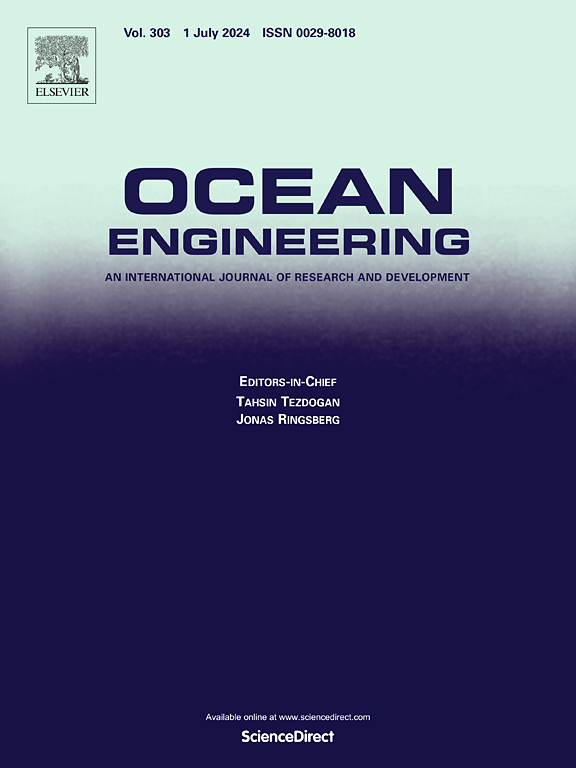Hydrodynamic behavior of a long-large and irregular submarine pipeline adopting a novel immersion approach during immersion construction
IF 4.6
2区 工程技术
Q1 ENGINEERING, CIVIL
引用次数: 0
Abstract
The hydrodynamic behavior of the long-large and irregular submarine pipeline (LISP) is expected to be different from that of the linear pipeline in immersion process. Further, the LISP is prone to cause the stress concentration, cables tension uneven distribution and cables taut-slack phenomenon. This further makes construction process for these types of pipelines more dangerous and uncontrollable. To reduce the potential risks and improve the stability of the immersion construction, a novel approach with a special immersion system is designed. Based on the pipeline theory, winch theory, and fluid loads theory, the numerical model is established. The hydrodynamic behavior of the pipeline immersion system during immersion is investigated. A sensitivity analysis is conducted with varying key parameters, such as the cable release velocity, airbag shape, and external environmental conditions. The results of the proposed numerical simulation show a high degree of consistency with the actual measured data. This novel immersion approach is feasible for the immersion construction of LISP. The cable tension and pipeline stress are very sensitive to the cable release velocity, wave height and tide. This study can provide valuable construction suggestions and avoid potential engineering risks and improve the economy for the immersion engineering of LISP.
求助全文
约1分钟内获得全文
求助全文
来源期刊

Ocean Engineering
工程技术-工程:大洋
CiteScore
7.30
自引率
34.00%
发文量
2379
审稿时长
8.1 months
期刊介绍:
Ocean Engineering provides a medium for the publication of original research and development work in the field of ocean engineering. Ocean Engineering seeks papers in the following topics.
 求助内容:
求助内容: 应助结果提醒方式:
应助结果提醒方式:


